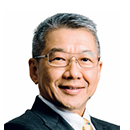Do people complain that you snore badly when you are asleep? Do not brush it off, as chronic snoring could be a sign of something more serious.

Snoring is the noise produced during sleep, when air is squeezed through the collapsible upper airway, consisting of soft palate, uvula, tonsils, adenoids, base of tongue, epiglottis and loose pharyngeal walls. The fluttering and vibration of these structures produce the noise. Over 50% of adults snore occasionally and 25% are habitual snorers. Snoring is more common in males and post-menopausal females. It is worst in the obese, and worsens as one ages if left untreated.
Sometimes, the upper airway obstruction is so severe that it affects breathing. This is known as Sleep Disordered Breathing (SDB), which encompasses the following:
- Apnea is a period when a patient stops breathing for more than 10 seconds (the episode can last over 80 seconds)
- Hypopnea is when there is abnormally shallow breathing, caused by partial obstruction
- Obstructive Sleep Apnea (OSA) is diagnosed when a patient experiences more than five apnea or hypopnea episodes per hour; in severe cases, there can be over 60 episodes per hour
- Upper Airway Respiratory Syndrome (UARS) is a condition that lies between snoring and OSA in terms of severity
Signs of OSA/SDB
Daytime
- Excessive sleepiness
- Morning headaches
- Unrefreshing sleep
- Motor vehicle or machinery-related accident
- Poor study, work and sport performance
- Sexual dysfunction
- Personality problems, moodiness, depression, irritability
During sleep
- Snoring
- Apnea episodes
- Restless sleep; tossing and turning
- Perspiration
- Sleep disruptions and arousals
- Choking and gasping
- Coughing
- Bed wetting
- Bruxism (teeth grinding)
Impact on health
- Simple snoring is harmless, but if left untreated, it often progresses gradually over years to OSA. Common complications of OSA are:
- Lower oxygen saturation, which stresses the heart, and suffocates the brain and vital organs
- Hypertension
- Heart attack and failure, especially in those with an already diseased heart
- Cardiac arrhythmia
- Stroke
- Type 2 diabetes
- Reduction in growth hormone, which leads to failure to thrive in children
- Increased risk when undergoing general anaesthesia for surgery
- Laryngopharyngeal reflux
- Liver problems, such as non-alcoholic fatty liver
Diagnosis
- Detailed history from patient and sleeping partners
- Home audio-video recordings
- Detailed clinic examination
- Video-rhinolaryngoscopic examination to determine the exact sites of obstruction
- Polysomnogram (Sleep Study), the Gold Standard
Treatment
Treatment needs to be specifically tailored to the severity of the SDB, the individual and preferences.
Lifestyle modifications
- Weight reduction — excessive fat in the neck and muscles ‘strangles’ the airways
- Change in sleeping position — avoid sleeping on the back
- Avoiding alcohol, sedatives and hypnotic drugs, as these relax the muscles that keep the airway open
- Avoid mouth breathing
- Stop smoking
- Myofunctional therapy to strengthen the muscles to prevent airway collapse and mouth breathing
CPAP therapy A ‘smart’ pump attached to a tightly fitted face mask that regulates a continuous positive pressure to the airway to prevent airway collapse and to assist in breathing.
Oral appliances or chin strap
Medical therapy to improve nasal passages
Surgical therapy Most childhood OSA is due to nasal obstruction, or adenoidal and tonsillar hypertrophy, so tonsillectomy and adenoidectomy provide a very high cure rate in children. In adulthood, surgery may be of significant help, but patients must then follow the recommended lifestyle modifications for optimal results. Surgical therapy needs to be tailored for the individual patient and may involve one or a combination of surgeries to improve airflow in the upper airway.







